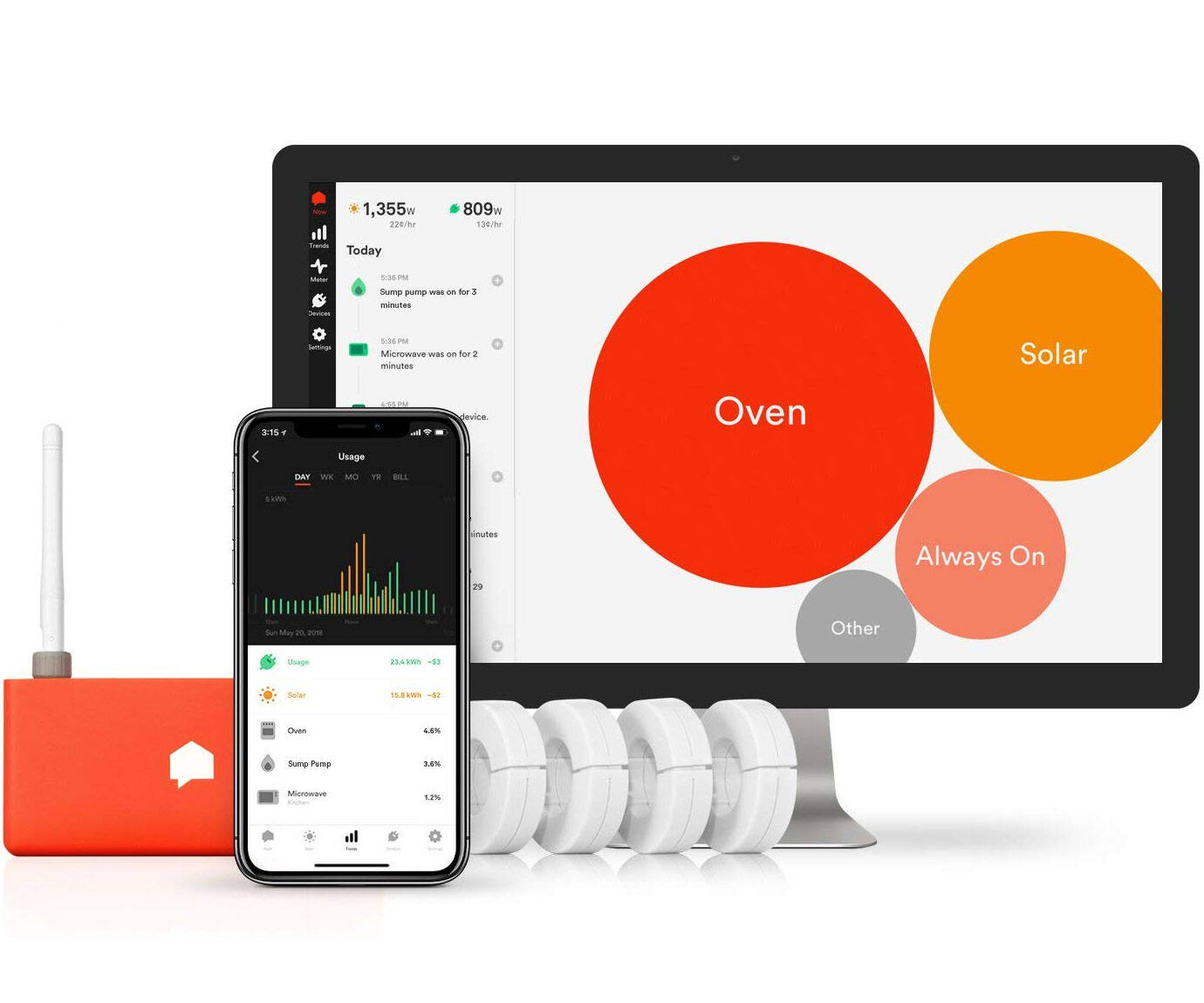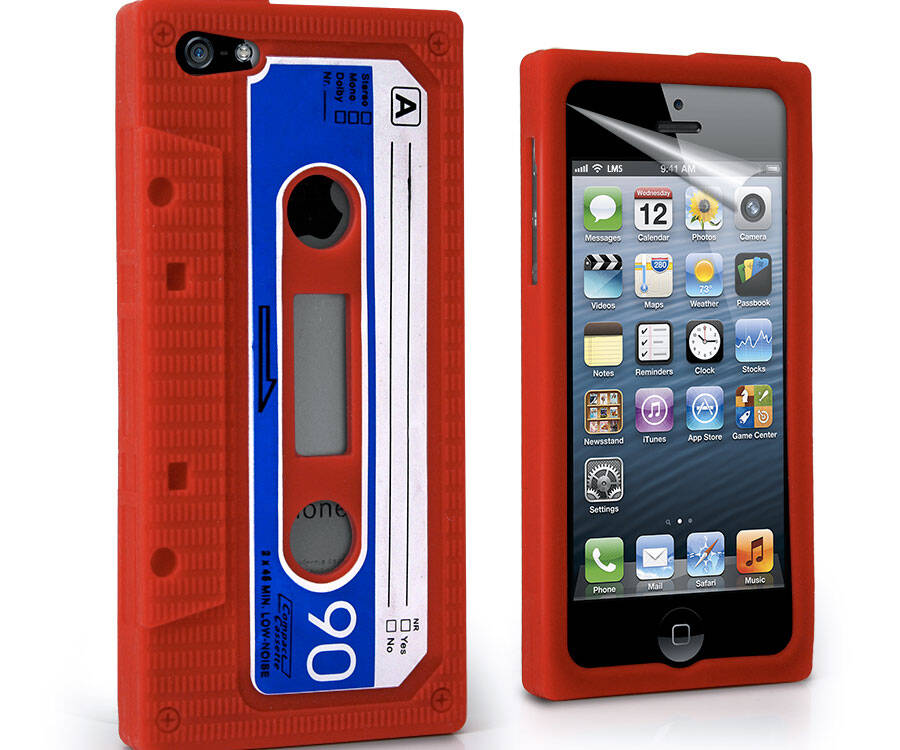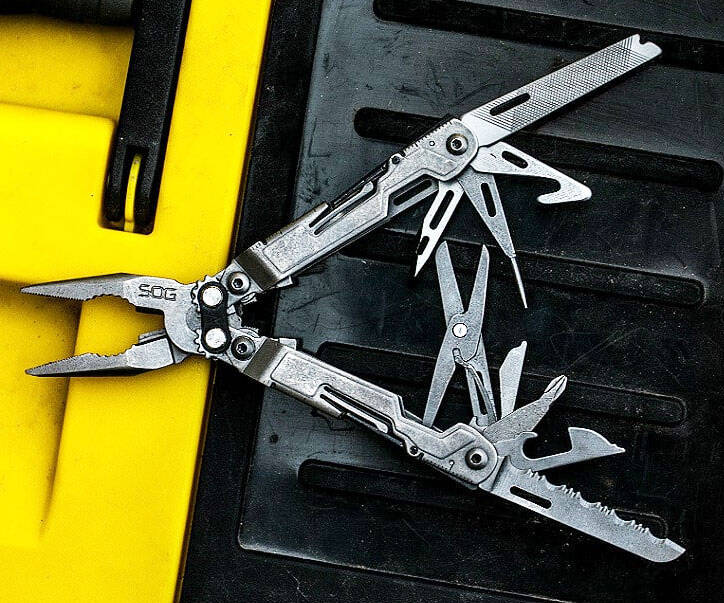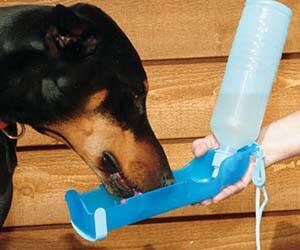Real Time Electricity Usage Monitor | ||||||||||
| ||||||||||
Product Description
Monitoring your home's solar energy production is as easy as checking your smartphone with this real time electricity usage monitor from Sense. It allows you to easily see how much electricity is being produced and used in your home at any given timeFeatures
- SENSE SAVES: Sense saves you energy and money by providing insight into your home's energy use and activity. NOW SUPPORTING TIME-OF-USE RATE PLANS.
- MAXIMIZE YOUR SOLAR ENERGY USE: Compare solar production and energy consumption side-by-side in a single view so you can maximize the power you make and minimize the power you buy.
- SEE WHAT’S UP. KNOW WHAT’S ON: Track how much electricity you’re using, what time your kids got home, or when someone leaves the basement light on. Sense identifies patterns in your energy use to help your family be more efficient, informed, and secure.
- AVOID DISASTER: Set custom notifications for critical devices, like your sump pump, well pump, or flat iron.
- MEETS RIGOROUS SAFETY STANDARDS: Sense’s components and system have been designed and ETL/Intertek certified for installation and operation inside the electrical panel. Sense is not currently available or compatible outside the United States and Canada.
Top Reviews
Updated Sept. 2019 - Cool Device But Struggles To Accurately Identify Most Household Appliancesby Chris Wilson (3 out of 5 stars)
April 4, 2018
Original Review (Dec. 10. 2018 update below):
Cool device and very accurate at detecting overall energy usage but individual device detection is hit & miss at best. I have had it for 3 months and it helps me monitor my overall home electricity usage in real time. It does an ok job detecting some appliances but a poor job detecting others (more on that below).
The Good:
-It is 99.5% accurate for what my utility company is measuring and billing me for, so it is very accurate
-Detects amperage and voltage on each 120V leg (hidden in the app menu; go to: Settings->My Home -> Sense Monitor), which is great when you need to see if one leg of your panel has more usage or voltage issues.
-Does data collection about once a second
- Can quickly identify resistance loads (space heater, toaster, etc) and induction motors (older furnaces, older pool pumps, exhaust fans) within a week or so if used regularly. Most of these items were identified correctly but dont always get detected between cycles
-Devices with single speed compressors take a little longer to identify but eventually get identified correctly (fridges, traditional AC unit, dehumidifier)
The Bad:
-Install is not for the average homeowner (but not much can be done about that from the Manufacturer's prospective). Having a pro install the component will be around $100 but there is not very good documentation to give a pro for install. The manufacturer has no real documentation meant for professional electricians (no electrical diagrams or requirements), so a pro who is not familiar with the product may struggle to get it wired into the panel quickly without going to the support website or calling technical support.
-For those with a panel with no room to add a new 2 pole breaker, your electrician will have to make room by adding at least 2 tandem breakers (at an additional cost)
-Wifi antenna extension cable needs to be longer. Installing the sense inside a metal electrical panel is dooming the device to have a poor wifi signal and the short extension cable for the wifi antenna is not very long, which made it a challenge to find a way to get the antenna mounted outside my flush mounted panel
- Device discoveries are usually "guesses" that require the user to verify it but many of the guesses were not accurate for me. The guesses have become more wild over time (ex. a 10 watt load had a 88% chance of being a clothes dryer even though my clothes dryer wasnt on at all).
-Device will use a decent amount of network bandwidth, especially when it is first started because it is "phoning home" to help identify usage patterns. (for those who have metered internet, especially Satellite Internet or those who use cellular data as the only means for internet).
-Will not detect variable speed motors (new pool pumps, modern HVAC equipment, HE washing machines)
- Will not detect lights on dimmers
-Struggles to find computers (I have a high performance desktop PC that stays on 24/7 and it has not been found in 3 months despite using the same amount of energy. My home office equipment in particular uses about 160KWH/month (but I know that thanks to the Kill-A-Watt, not the Sense monitor).
Suggestions for the Manufacturer:
-Create a device similar to the Kill-A-Watt that pairs with the Sense monitor to quickly "train" sense on some of the most common appliances like computers, toasters, etc. This would greatly speed up the device discovery process and eliminate the guesswork for the user. I would love to walk around the house in a matter of hours and train the Sense monitor to detect most of my most commonly used objects. This would eliminate the months long process of guesswork involved.
- Create a "training mode" that essentially lets a homeowner turn things on one at a time to help quickly (and more accurately) identify the most commonly used appliances and lights. Information provided to the homeowner will be much more accurate after the device is trained.
- Partner with a wifi extender company or offer one that easily extend a home's wifi to the sense device. Most electrical panels are located outside of the living space of the home (building exterior, garages, or basements). Most wifi equipment is not going to be close to these locations and I would imagine that it would be needed often. My device in the garage is on the fringe of my wifi (50% signal strength) but my house is only 2000sqft with the wifi centrally located in the house. If my house was any bigger, I doubt the sense device would be able to stay connected to my wifi reliably.
- Technical documentation in PDF format for electricians. The website is great but an electrician needs a set of technical instructions that can be printed out by the homeowner. Also define whether it is ok to connect to a breaker that is designed to accept 2 conductors per circuit (like the Square D breakers).
-Web interface from a computer is incomplete. The web interface for Sense does not have the power meter function available, forcing the user to use the phone app.
This is a great meter but I would not install it in a customer's home to help break down their usage by category. It is very cool to see usage realtime and what it does when you turn things on and off. I also think this device would be fantastic for someone wanting to get an idea of their home's peak load so a backup generator could be properly sized for a home. I do not think the appliance identification is ready for prime time because most of the "suggestions" were wrong. My house is fairly high tech with modern appliances (variable speed pool pump & Mitsubishi variable speed HVAC system) and the Sense device has not been able to identify any of them because their power usage constantly varies.
I expected more accuracy of detected devices for a $300 product plus the $200 I had to pay an electrician to put this in. I have a very expensive device that tells me how much total electricity my house uses each day (my power company lets me see the same reports on their website).
Update: 12-10-2018:
So my original review still stands (read that first) but here is an addendum.
More good:
-Web interface now has live power usage, which is great to view in a web interface.
- They now let you setup your billing cycle so you can view your billing cycle usage each month (as of this review, this could only be viewed from the phone/tablet app).
- Usage alerts - I can setup alerts to inform me if monthly usage is trending above a certain threshold. Ex. my first 1000KWH is dirt cheap but everything after that is more expensive. I usually use less than 1000KWH except in the Summer. Sense will alert me if things are trending towards going over my 1000KWH limit that I setup. I usually will get alerts fairly early in the billing cycle to help make sure I try to reduce my usage. This has allowed me to reduce my electricity bill by staying under 1000KWH for 7 months of the year so far (a 1000KWH usage bill is only $65 total)
The Bad -
-Things have not gotten any more accurate. In fact, the only accurate appliances that get identified on their own are: AC condenser (16 year old single speed outdoor unit), refrigerator, portable dehumidifier & mini fridge. I do have a generic 500 watt resistance (heat) load that I eventually created because the app sees it whenever I run one of the two small burners on my stove or my radiator space heater in my master bedroom (on low).
-My pool pump runs daily from 8am-5pm but is variable speed (Pentair Intelliflo -consuming 200-250 watts per hour usually). In the 10 months I have owned the Sense unit, it has never identified the pool pump as anything (not even a guess).
-The same goes for my computer. I have tried to turn the computer off at night but the Sense unit hasnt even attempted to guess what this daily ~225watt load is.
-One other appliance that I was surprised that the Sense unit could not identify is our dishwasher. We run it about 3x a week on the same setting every time. It is an older dishwasher from 2007, so it would be nice to see how much energy each cycle uses.
-From time to time, I log into the app and see that it thinks that appliances are running when they arent. I "report" the errors and the app just says "we will use the info to make things more accurate".
The problem with group machine learning is that the data has to be accurate (to become useful information). I dont feel there are many homeowners out there that are willing or able to accurately confirm all their appliances as running (they are more apt to just confirm the app's suggestion that an appliance is what it really is). Garbage data input equals garbage data output. For example: a group of non-observant homeowners using this device could confirm the Sense guess that an appliance is their clothes dryer when it really is their oven (because they both have similar electric resistance loads). The machine learning becomes flawed and could start to predict other homes the same way.
Again, this device is very accurate at detecting overall energy usage and does a great job keeping track of overall energy usage BUT do not expect it to accurately figure out everything in your home on a granular level (ex. Dishwasher, Clothes Dryer, Iron, Clothes washer, living room lights, Coffee Maker, Toaster, Oven, TV, Cable Box, Cable Modem, Computer, Garage Lights, Vacuum Cleaner, Air Purifier, Pool Pump, etc). If those are your expectations, then you will be pretty pleased with the product. It still has great features but know it's limitations based on on my (and other's) real-world experiences and I think you will be happy.
Update Sept. 22, 2019
Device is still unable to detect anything accurately in my home except the garage lights, garage door opener, and a 500 watt heating element load. It occasionally gets my pool cleaner pump (not my main pool pump) but it also says its on during the day when it is clearly not, so the usage statistics are not accurate (such as percentage of daily usage). No matter how many times I report the device as not on, it eventually gets detected as falsely on after a few days. It does see my mini fridge and regular fridge but confuses the two back and forth on a regular basis, so again usage statistics for each device is wrong. It sometimes is able to nail my AC condenser but not always, so again, usage statistics are inaccurate.
This is a very good overall usage meter as it is accurate within a half a percent of what my utility company says I use and when I use electricity, but I stand by my statement that the appliance learning is a crapshoot at best. I have had the device for 18 months and it is unable to "learn" my home appliances, so i have a glorified live energy monitor, which is useful, however I would never trust the appliance usage statistics.
Updated - Returned this because I found something better
by Jonathan Frederick (1 out of 5 stars)
May 14, 2018
I ended up returning mine. For me personally, the risk of waiting beyond the 30 day return period for it to detect more than the 5 devices that it did was too great. So I gave it about 25 days and then even contacted support to see if it was actually working properly to give it the benefit of the doubt. After those 25 days it had detected my water heater, maybe the furnace fan? maybe a fridge? a heating device that it didn't know what it was, etc. Support said give it more time. Again, $300 is a lot to gamble for potentially 5 devices. I would think that stuff like my hot tub that uses 5kw should show up some time within that 25 days. I do agree with other reviews where they mention that if you are only going to benefit from seeing the entire house's consumption then there are much cheaper devices that can do this and in the case of some it is free from the electric company as well. It is a shame because I see folks ask sense constantly about "training" it to create signatures for their own devices and sense gives the same line every time about how they can't do that because they have one big database instead of individual ones for each user's set of devices.
Anyway the primary reason I came back in here to update this was because I ended up finding something better. Search google for IoTaWatt. For $250 you can get monitoring on your mains and 12 individuals circuits on average. For some circuits like Air Conditioning you may need to use up two of the 12 to effectively monitor it which will be explained on the website. But you can also merge some together like in the basement I have four circuits going through one of the twelve and I just merge them all and track the whole basement. So again on average you can come out to tracking about 12. Newer electrical codes have a lot of your individual big appliances on individual circuits so it is easier to track when you are watching at the circuit breaker level. The guy selling them provides great support and it was all very easy to set up. I am not affiliated with the company at all. Just wanted to provide an alternative.
Only detect 20% of household load
by Mike (3 out of 5 stars)
March 29, 2018
After 4 months the Sense monitor has detected about 20% of my household load and that's been true for about 3 months now. Nothing new is being learned. This is helpfull in determining our household energy use, but far from as useful as I'd like. I have taken to using a Kill-a-Watt meter and a clamp-on ammeter to measure the devices that Sense is not detecting.
If one is comfortable working inside a breaker box the device is simple to install. Connect to power, hang the antenna outside the box and go. Easy. If not, you'll need to pay someone to do the install.
The smartphone app is good, but lacks some functionality that would be very helpful. For example: The Sense will sometimes detect a single physical device as multiple electrical devices, which requires human intervention to "merge;" the app could offer some hints, based on timing correlation, about which devices might be related. Also, there needs to be some way to give some hints/training to the Sense (yes, I know, I know, Machine Learning doesn't work that way. Blah blah blah. It needs to be there.) Also, the app should tie in better with other measuring devices. There is support for IFTTT, which is, hate to keep saying this, not very useful. There are other smart measuring products out there and the Sense app could integrate with some of those to provide a fuller energy-use picture.
Customer support is responsive and polite. Very nice people. There's not much they can do about the limitations of product, but they are quite polite and responsive.
So.... I rate this product 3 stars because I'm hopeful that it will improve.
Useful for measuring total household energy usage, but not much else
by Nicholas (2 out of 5 stars)
May 15, 2018
I've now had sense installed almost a week, and will update this review as events progress. At this point my feeling is that while Sense may be a great development of interest to those who were familiar with what was possible before, they have clearly oversold and under-delivered to the mass populace.
Installation
Installation wasn't as smooth as I'd hoped.
There were no real instructions online, so no way to see what installation would entail until the product arrived. I took Sense's word for it and hired an electrician for the day Sense would arrive. It turns out you just need to connect Sense to a breaker so it has power, and place two sensors around your incoming mains...something almost anyone can do without hiring a ridiculously expensive electrician.
After seeing the electrician off, I then spent an hour trying to get my Sense app to connect. Sense had made the 'successfully installed' tone when we turned power back on, so I was confused. Eventually, buried in the help docs, I found that Sense only listens for BT setup connections for the first 15 minutes. After that you need to flip the breaker off and on. That's a terrible design decision; it should listen until something connects and it's setup. But if they had to design it this way it should at least be placed in big bold letters on the 'connection failure' screen.
Note that I mentioned Bluetooth. You will need a phone or tablet with bluetooth to set Sense up. This is not optional, even if you plan to use a PC to do all your reporting and monitoring.
In short, I could not easily install and setup Sense myself in 20 minutes, but due to poor design/instructions I paid an electrician over $100 and wasted several hours on it.
Performance
For the first day or two everything was an unknown device, though it was neat to be able to see my total household power usage at any given time, and watch it change as I switched stuff on and off.
It said to wait 24 hours before devices started to appear. I didn't see my first device until 40 hours in, and it was named motor 1. I spent much time running around the house trying to figure out what it was to no avail. It turned on every time I used the hot water so I thought it may be my tankless water heater, but it only used 2kw, and I watched "other" jump to 15-20kw at the same time (which is what the heater is capable of using), so it really didn't make sense. My best guess is that it was one of the three coils in the heater, but I still don't know why it would only use 2kw. It didn't matter in the end anyway, as after a couple days, and all that time trying to track it down, it just disappeared from my UI!
At this point I also have "Pump 1" and "Motor 2", which don't seem to correspond to anything either; I've checked all the appliances and pool equipment. I'm guessing they're components of something larger. I have "Microwave" which reads power usage when the microwave is on, but it also read 1350w when I was sitting there eating dinner and the microwave hadn't been on for almost 20 minutes. I have "AC" which finally showed up on day 5, but it reads as off when I hear my AC compressor spin up. I also tried cycling similar devices (like my pool heater) but nothing lit it up. And "AC" is listed as consuming 1300-1400 watts when it is running, despite the fact I can watch "Other" jump by 3kw - 4kw every time the AC comes on.
And that's it. Almost a full week and I have 2 device identified, 2 devices that I'm supposed to identify, and 90% of my power usage falls into "Other" and "Always On". Hardly the recipe for making energy saving improvements.
UI
There seem to be more features in the app than on the desktop (HTML) interface, which is weird. My computer is where I want to create my spreadsheets, run reports, create predictive models...I can't do that on my phone. It seems like a design decision was made to cater to vacuous young first time homeowners who are interested in flash but without the attention span for depth. (not that all young adults are like that; just the ones this app is catered to).
That doesn't matter anyway, because there are no spreadsheets. There are no CSV downloads or even reports that list on/off times. Besides being absolutely require for running any kind of predictive models, this is the most important information you need to identify devices! I raised this point with support and they said their dev team was considering it. I've been a web applications developer for 20 years...if basic reporting of critical data was not in my project plan before I even wrote a line of code I'd be reprimanded in almost any job I've held. This is absolutely unacceptable.
The lack of reporting is made more critical by the fact that the interface lies. After spending an hour trying to track down a device the other day that my phone showed as off the entire time (even though the device I thought it was had turned on and off a few times), I finally looked at my computer to see that the web interface showed it as on. So one of the two interfaces was lying. I've seen this other times too. And I've also noticed that the web interface will show something as off, but after I refresh the page it shows as on.
On/Off reports aren't the only problem. I watched a device turn off the other day (even had the alerts on my phone set so that I got instant notification). It was the device that I identified as being associated with my hot water. However, within 15 seconds of it turning off my phone reported the device as "Off for 16h". Less than 2 minutes later my computer reported it as "Off for 26m". So was it off for 1 minutes, 26 minutes, or 16 hours? Was I hallucinating the alerts? How can we possibly be expected to identify a device with such wildly inaccurate data!?
The UI really seems to be the biggest problem with Sense; even worse than the poor identification. And that's because it's not just doing a poor job; it's actually giving us incorrect information.
Conclusion
I'm really not sure what was out there before. Maybe pre-Sense our only option was a meter to see how much total power was coming into the home, and Sense is an amazing breakthrough. And maybe after a few months of learning Sense will be more accurate and give me useful data. I really don't know.
And that's the point: I really don't know. Neither does most of the public who doesn't really have experience with this sort of thing (read: the vast majority). So when Sense promises things like "Over time, Sense's machine learning algorithms identify unique signatures in the power use of individual devices within your home and match them against a growing database of appliances and home electronics" we have no context within which to evaluate them. So Sense really has a responsibility of setting a context...or at least letting people know that "over time" means timescales measured in weeks, or even months or years.
So far I have learned nothing that will help me save money on my electric bill. Instead, I'm out $400 and countless hours trying to be a Sense detective. Maybe my feelings on Sense will change over time as it learns more, and if that happens I'll leave an update, but for now I'm not happy at all that I purchased this product.
Meh...
by kent z. ozkum (3 out of 5 stars)
March 10, 2018
I bought this product to try and get a handle on my utility bills. To be completely fair, we do have a complicated electrical setup with a two zone, geothermal HVAC and a solar install. However, I find the algorithms as they stand are very slow to identify energy users and the software/user interface to be woefully inadequate.
My biggest gripe is there's no way to help the software along by providing real-time information - i.e. the refirgerator kicks on, but there's no way to 'tell' the algorithms what just happened. This would go a long way to identifying energy users very specifically and quickly.
Instead, you have to wait for the algorithm to figure it out on its own, which apparently can take months.
Unless the algorithm identifies an energy user and gives it a name, there's no way for you to help the system along except to watch the 'other' usage column grow when you know what's currently on and running.
We'll see if things get better but so far, meh....
a good tool and concept, needs just a bit more to be a GREAT tool
by Don Kelley (4 out of 5 stars)
June 13, 2018
The good, bad and ugly.
Easy to install, sure you can hire an electrician, but if your careful and use common judgement you can install this easily. Easily? 10 minutes or so.
The setup is quite easy, make sure the first step is to make sure you have wi-fi signal where your electrical box is. Once you have wi-fi connection it takes about 2-5 days for it to start to populate what you may have working in your house. The bad... you may get "heater" (not real specific), then a week later you may get "heater 2 (or 3,4,5)" as it tries to understand each item in your house electrical signature. This recognition of electrical signatures is really hit and miss. Ideally, one may want to have everything off at the circuit box and turn section by section on to get a better idea of what each item draws. (time consuming and you need more than one person.
the ugly... for no reason, Sense will lose wi-fi signal and stop reporting. When/how will you know? when it notifies you by email. In my case that has been anywhere from a few hours to a day to let me know it is no longer working. While the instructions do not really go into great detail, to reconnect to the wi-fi is a bit more involved than just getting near the box with your phone or tablet and reconnecting. You actually need to have your phone/table reconnect with bluetooth first.
Overall, I do like it, it has identified several issues with excessive electrical usage. In the first month it helped me lower my electrical bill by 35%. It allows me to analyze what times of day my energy usage increases and you can find the culprits. You can also use it in conjunction with your utility company to see if the numbers match (what they say you are using and you can see if it is the same).
Technology wise, it is in its toddler stage, a bit awkward but making progress. I think it is still a few years/versions away from being a "must have" item.
Not what it's made out to be monitor lacks smarts.
by CFREEL (1 out of 5 stars)
September 20, 2018
I am an energy producer and wanted to monitor all the loads and production on my pool house. After one month of installation I still have loads such as my pool pump that runs twice daily that are identified by sense as "other" which simply means you cannot track these loads until the sense identification is completed. There are no tools to for self identification of loads and I have seen Sense mistakenly identify a similar load on my panel and group it's power usage with another device. Not ideal if your trying to get an accurate account of your device usage. To date my Sense unit has only identified four loads and groups all unidentifiable loads as "other" with no way to track or break out the loads or associate with the correct device. I have 22 devices that consume power in my building and after a month of Sense it's smarts have only identified four (4/22) I'm not happy with my purchase and was led to believe by Sense support that it will get better with time. Negative If it doesn't perform return it while you can. It's too late for me I bought their bsgetti
Unexpected Results
by Dan Wood (5 out of 5 stars)
March 10, 2018
I love technology but this has exceeded my expectations. It was very easy to install and in 15 minutes I knew exactly how many Watts my home was using. Now, I purchased this to understand my daily energy usage as I was upgrading my portable emergency generator but really didn't know where to begin in calculating every plug, refrigerator, freezer, light bulb in my home. This was perfect for knowing exactly what I needed, but the added benefit is that I found things in my home that are drawing more power than I realized, heated floors for example and I found Blubs in my home that were still using incandescent bulbs. After a month my energy use dropped by $2.10 per day per Kw... then the next month it dropped $2.76 per day per kw. That may not seem like a lot but that works out to $63 and $83 a month savings. I am only 2 months but absolutely love this. The app is great and is constantly listening to new signals. I was able to tell from work that one of my daughters left the sink water running and our well pump was drawing energy every 2 minutes to refill the tank. I am now excited to see my energy bill every month... to see the savings.
I've had it for about 2 weeks and I love it. It's highly accurate in terms of measuring ...
by Ken T. (5 out of 5 stars)
March 15, 2018
I've had it for about 2 weeks and I love it. It's highly accurate in terms of measuring wattage. It'll pick up an iPad tunring on when it's plugged in, about 6 watts. When I turn on lights, the increase is very close to what I expect. Solar measurements are nearly identical to what is displayed one my dual inverters, within 3-6 watts (of as much as 10,000) and that's compared to a display on the inverters that changes constantly.
Some people complain about the device identification. In 2 weeks, it's found 8 devices and pretty accurate in the identification. If the label from Sense is wrong, you can easily change it. You also have to realize how identification works. It's just looking for electrical fingerprints which are not simple direct increases/decreases in power usage to be recorded. Many devices are a variation of power usage. I have a space heater that's is a stair climb of power usage when it's turned on. The coffee maker is on and off. A PC changes power usage with nearly every action, a file opening, a video playing, etc. When just monitoring line power, it's not going to identify all the devices in your home one for one, but if you want a great snapshot of your home's usage and solar production with a high degree of accuracy, you'll love this device.
Not Ready for Prime Time
by James (1 out of 5 stars)
November 3, 2017
I have owned two Sense units (two 42-space breaker panels) for over a year now and I am very disappointed with the product. Each unit has detected about 10 devices in that year period. I haven't counted, but I would estimate that there are well over 100 devices it has not detected. For example, I have 6 LCD/LED televisions, 3 garage door openers, 14 ceiling fans and 3 water heaters and not one of these has been detected. It also has NOT detected my washing machine, refrigerator, freezer, pool pump, well pump, toaster, computers, timed exterior lights, nearly every light fixture and more.
They do not give you a way to manually add a device, which would be of extreme value (they are good at adding features like Alexa, IFTTT and costing, but they are completely useless without the devices).
When you contact support, they'll have you perform various tasks such as reboot, re-position your router, check the sensor leads, add an extender, change the access point name, etc. And you'll do this over and over again, hoping Sense will pick up more devices, until Sense is outside the return period or you have so much time and money invested into extras that it's not cost effective to remove. But in the end, Sense still will not detect new devices.
If you are looking for a tool that will tell you your total power consumption, and you go into it with that expectation, then you'll be satisfied, but there are less expensive solutions out there. If you want Sense to identify most of the devices in your home, then this is not the product.
Customers Who Bought This Item Also Bought
- Square D by Schneider Electric HOM250PSPD Homeline Plug-On Neutral Whole House
- Siemens Q215 15-Amp 2 Pole 240-Volt Circuit Breaker
- 6in X 100ft Solar Panel Bird/Critter Guard Roll Kit | 60 Fastener Clips | Used for Bird/Critter proofing Solar Panels | Removable Without Damage
- SmartDry Wireless Laundry Sensor and App, iOS and Android Mobile Devices. Compatible with Alexa. Smart Dry Notifications for any Clothes Dryer (Gas or Electric), Smart Home Clothes Dryer Accessory
- Siemens MBK175 175 Amp Replacement Main Breaker
- Siemens FS140 Whole House Surge Protection
- Flume Water Monitor: Smart Home Water Monitoring to Detect Leaks & Track Water Usage in Real Time. Compatible with Alexa.
- PowMr 24 Pairs Mc4 Solar connectors - MC4 Male/Female IP67 Connectors(24 Pairs MC4 connectors)
- Kasa Smart WiFi Plug w/Energy Monitoring by TP-Link - Reliable WiFi Connection, No Hub Required, Works with Alexa Echo & Google Assistant (HS110),White
- 40 Premium UV Resistant Solar PV Safety Warning Photovoltaic System Labels With Rapid Shutdown
*If this is not the "Real Time Electricity Usage Monitor" product you were looking for, you can check the other results by clicking this link








